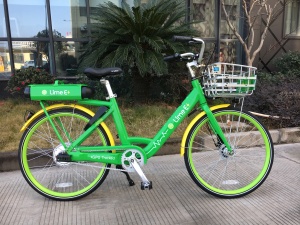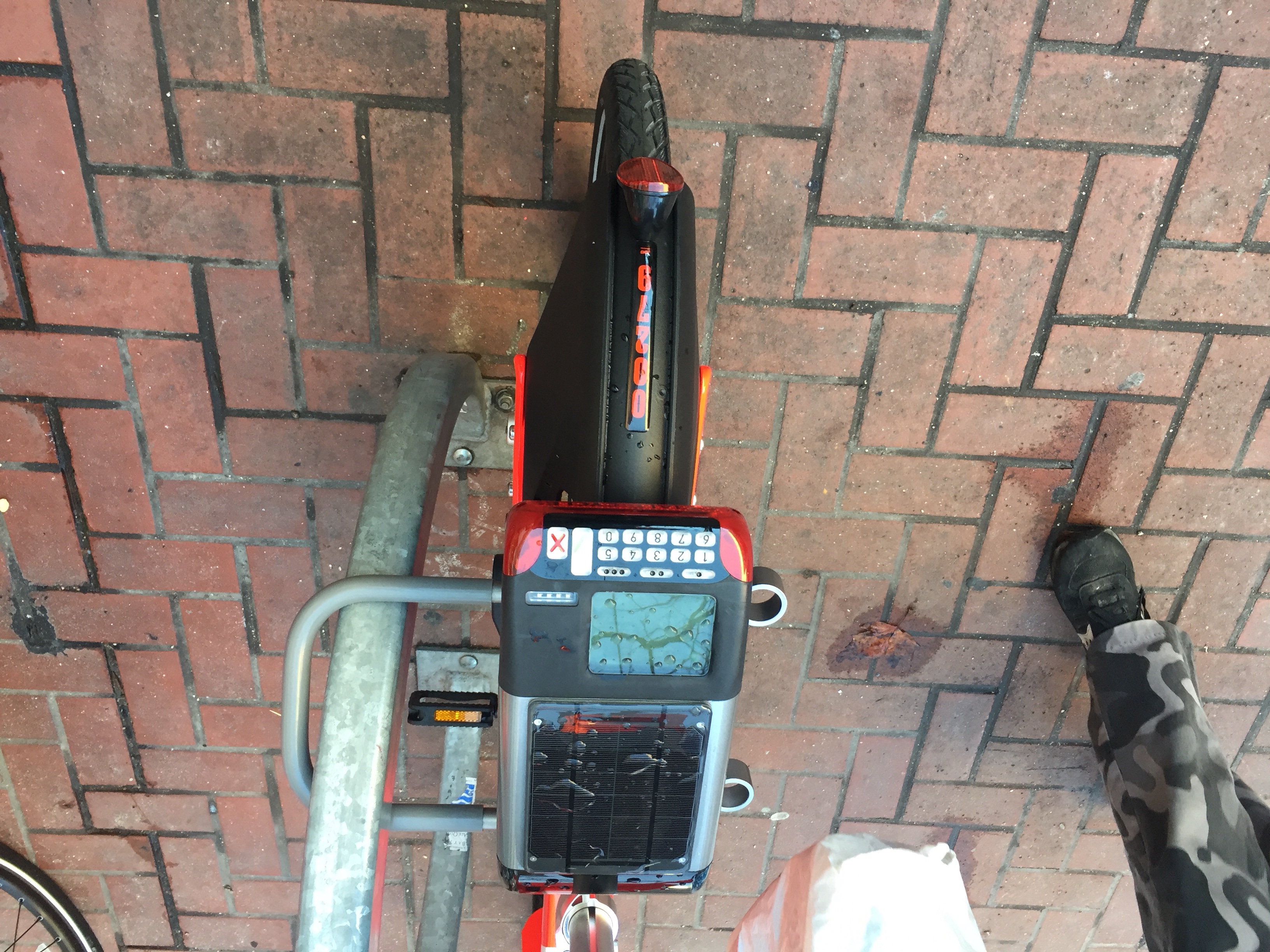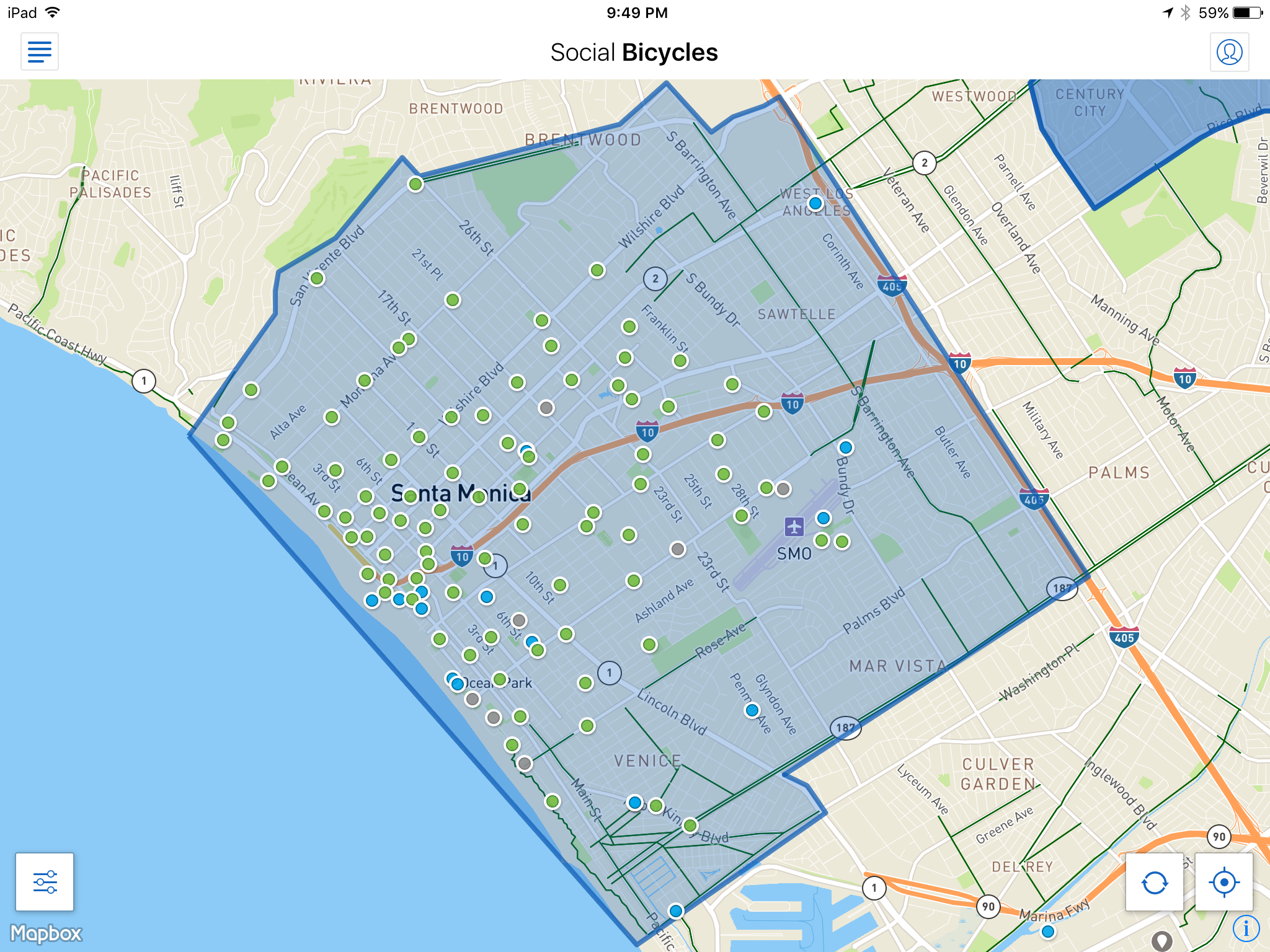The City of Sacrament is set to adopt a bike share ordinance on Tuesday evening (agenda item 23). This is one more step along the way to bringing JUMP electric bike share to Sacramento, and on the whole the ordinance is good. But I have some suggestions for improving it.
5.18.210 Bicycle parking spaces required. No person shall operate a bicycle‐share business unless they have provided and maintain at least one and one‐half bicycle [designated] parking spaces using bicycle racks for every bicycle‐share bicycle to be operated by the bicycle‐share business, as approved by the city. The installation of bicycle parking spaces and bicycle racks are subject to encroachment permit requirements, as set forth in chapter 12.12.
 I completely understand the city’s desire to have an orderly bike share system, where the bikes are in known locations and not scattered randomly. In my experience of dockless bike share in other cities, the concern about bikes left in inappropriate places is exaggerated but real. However, bike racks are not the only possible solution. The photo at right shows a solution from Seattle, still experimental, but with great promise. I would hate to see the city shut the door on other solutions by specifying bike racks when they could specify designated places, of which racks would be one. Bike racks are important, and preferred, but there will be many areas within the system boundaries which do not have racks, or do not have convenient racks.
I completely understand the city’s desire to have an orderly bike share system, where the bikes are in known locations and not scattered randomly. In my experience of dockless bike share in other cities, the concern about bikes left in inappropriate places is exaggerated but real. However, bike racks are not the only possible solution. The photo at right shows a solution from Seattle, still experimental, but with great promise. I would hate to see the city shut the door on other solutions by specifying bike racks when they could specify designated places, of which racks would be one. Bike racks are important, and preferred, but there will be many areas within the system boundaries which do not have racks, or do not have convenient racks.
5.18.220 Retrieval of bicycle‐share bicycles. A bicycle‐share business shall, within two hours of notice, retrieve their bicycle‐share bicycles that are in any of the following conditions.
- Bicycle‐share bicycles that are inoperable or not safe to operate, and parked in the public right‐of‐way;
- Bicycle‐share bicycles that are not locked to a bicycle rack in an upright position[, or locked within a designated bicycle parking area with the kickstand deployed];
- Bicycle‐share bicycles with a battery or motor determined by the city to be unsafe for public use.
- Bicycle‐share bicycles parked in violation of section 10.76.050.
This change is consistent with using designated areas, rather than just bike racks.
5.18.230 Electric bicycles. Electric bicycles shall comply with the California Vehicle Code and any other applicable laws and regulations[, and shall be of the Class 1 type (CVC 312.5. (a) (1): A “class 1 electric bicycle,” or “low-speed pedal-assisted electric bicycle,” is a bicycle equipped with a motor that provides assistance only when the rider is pedaling, and that ceases to provide assistance when the bicycle reaches the speed of 20 miles per hour.]. In addition, electric bicycles shall be equipped with software or other mechanisms to prevent the motor from providing assistance when the bicycle’s speed exceeds 15 miles per hour.
I would like to see the 15 mph speed limit removed. There is anecdotal evidence, no research yet that I could find, that e-bikes are somewhat more dangerous that pedal bikes, with a higher crash rate. But many of the anecdotes don’t make clear whether the bikes were pedal assist, Class 1, or throttle, Class 2. Almost none say whether speed was a contributing factor, in fact some seem to be at low speeds, just getting going with a heavy bike. Some bikes with powerful batteries do start suddenly, but my experience with JUMP bikes in San Francisco is that they are pretty smooth as the assist starts and stops. The JUMP bikes are 250 Watt, which is on the low end of power for electric bikes.
The reason speed is important is that a bike at 20 mph is transformative. In moderate to heavy congestion in a urban area, such as most of the area within the system boundary, e-bikes at 20 mph can keep up with traffic. At 15 mph, they are just a regular bike with a little less effort involved. At 20 mph, they could replace many private vehicle trips, and many ride-hailing trips. We already know that private vehicles and ride hailing trips have a negative impact on livability and the environment. Here is a solution! Let’s set them free and see what a difference they can make.


 I attended the bike share open house hosted by the City of Sacramento last night. There were as many people representing partners and consultants as members of the public, and I did not see any low income or people of color. SACOG staff were present, as SACOG is the sponsoring agency for the bike share program, staff from Toole Design Group which is managing planning and selection of bike rack locations, and staff from
I attended the bike share open house hosted by the City of Sacramento last night. There were as many people representing partners and consultants as members of the public, and I did not see any low income or people of color. SACOG staff were present, as SACOG is the sponsoring agency for the bike share program, staff from Toole Design Group which is managing planning and selection of bike rack locations, and staff from 


 I rode a Jump e-bike in San Francisco yesterday. This was the first day that the program was open to the public, though there had been a low-income pilot going on for several months previously. The bright red (vermillion) bikes are pedal-assist. If you don’t pedal, they don’t go anywhere. But if you do, they really jump out. Though I haven’t ridden any really steep SF hills yet, the bike handled moderate hills with ease. I did ride most of the way across SF and back, and a chose a somewhat more hilly route than I normally would have.
I rode a Jump e-bike in San Francisco yesterday. This was the first day that the program was open to the public, though there had been a low-income pilot going on for several months previously. The bright red (vermillion) bikes are pedal-assist. If you don’t pedal, they don’t go anywhere. But if you do, they really jump out. Though I haven’t ridden any really steep SF hills yet, the bike handled moderate hills with ease. I did ride most of the way across SF and back, and a chose a somewhat more hilly route than I normally would have.


